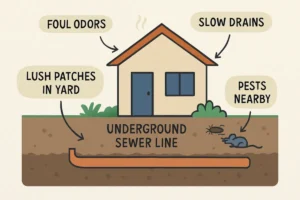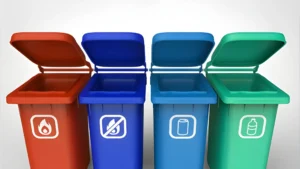The whole concept of deciding to buy queen mattress online still feels weird to some people because how do you test something you’re going to sleep on for the next decade through a screen? But the online mattress industry’s figured this out with trial periods, detailed specifications, and honestly better return policies than most furniture stores. Plus you’re avoiding that showroom experience where someone hovers over you while you awkwardly lie down for thirty seconds. Online retailers usually cut out middlemen costs too, so similar quality mattresses often cost 30-40% less than brick-and-mortar prices.
How the Box Delivery Thing Actually Works
Most online mattresses ship compressed and rolled in boxes that are way smaller than you’d expect. They use vacuum sealing and compression machines that squeeze a full queen mattress into a box you can carry—barely, but still. The mattress stays compressed for shipping, which usually takes 3-7 business days depending on where you are.
When it arrives, you’ve got to unbox it within a few weeks. Leaving it compressed too long can damage the materials. The decompression process is straightforward: cut the plastic carefully—seriously, use scissors not a knife so you don’t slice the mattress—and it expands within a few hours. Full expansion and off-gassing can take 24-48 hours though. That new mattress smell is volatile organic compounds (VOCs) releasing, which is normal but some people are sensitive to it. Just air out the room.
What You Lose and Gain Online
You can’t physically test it first, which is the obvious downside. But most online brands counter this with 100-night or even 365-night trial periods. The logic is sound: you need way more than ten minutes in a showroom to know if a mattress works for your body. Sleep studies show it takes about 30 nights for your body to fully adjust to a new sleeping surface and for you to accurately assess comfort and support.
What you gain is honest information. Online retailers usually provide detailed specs—foam densities, coil counts, layer breakdowns—because they’re competing on transparency. Physical stores often hide this stuff or the sales staff doesn’t even know it.
You also get customer reviews that are harder to fake at scale. Read the negative ones specifically. Look for patterns. If twenty people mention sagging after six months, that’s data.
The Certification Labels That Mean Something
CertiPUR-US certification means foams are made without ozone depleters, flame retardants, mercury, lead, and other heavy metals. They’re also tested for low VOC emissions. It’s a decent baseline but not super strict.
OEKO-TEX Standard 100 is tougher. It tests the finished product for harmful substances—not just the raw materials. European standard, pretty widely respected.
GOTS (Global Organic Textile Standard) applies to organic cotton covers and materials. If a mattress claims to be organic, this certification backs it up.
Lack of certifications doesn’t automatically mean a mattress is garbage, but having them is a good sign the company’s invested in quality control.
Payment Plans and the Real Cost
A lot of online mattress companies offer Afterpay, Zip, or their own financing. Breaking a $1,500 mattress into payments makes it accessible, but remember you’re still spending $1,500. The interest-free period is great if you actually pay it off in time. Miss payments and you’re paying way more than the mattress is worth.
Factor in whether the base price includes delivery. Most do for standard shipping, but some charge extra for white glove delivery where they set it up and remove your old mattress. That service usually runs $100-200 but saves you the hassle.
Return and Warranty Reality Check
Trial periods usually require you to keep the mattress for a minimum time—often 30 nights—before you can return it. This prevents people from buying it for guests and returning it after the weekend.
Returns might be free, or there might be a pickup fee. Some companies donate returned mattresses, others recycle them. Very few can resell them for health code reasons.
Warranties typically cover sagging beyond a certain depth—usually 2.5cm to 3cm of permanent indentation. They don’t cover normal softening or comfort preference changes. Most warranties are prorated after a few years, meaning you pay a percentage if you need a replacement.
Smart Shopping Moves
Buy during sales but verify the discount is real. Some sites inflate the “original price” to make sales look better. Check price history sites or just watch the listing for a few weeks.
Compare the actual specifications between brands, not just marketing fluff. A 30cm mattress with three foam layers might be the same quality as another brand’s 28cm mattress depending on foam densities and layer thickness.
Read the fine print on shipping times. “Ships in 1-2 days” doesn’t mean arrives in 1-2 days. Some companies manufacture on-demand, which can mean 2-3 week waits.
Check if the company’s still in business before buying. The online mattress space has had companies shut down suddenly, leaving customers with useless warranties.
Also Read–Trawling vs. Trolling: Differences, Techniques & Impact











